Project_Hel is a remix of Ghostrunner’s central concerns. Rather than moving up through the stratified Dharma tower, Hel descends. Rather than killing “Keys” (meaning cops; it’s one of the game’s extensive silly proper nouns), she murders members of an underground resistance movement. Rather than discovering a new identity, like the titular ghostrunner (named Jack), she barely asserts selfhood before re-assimilation into the tower’s systems. It’s still the same song, but rearranged, made new enough to be novel.
In practical terms, this result is largely the same as the base game. You still play a deadly cyber ninja, slicing enemies with a katana, wall-running and leaping over endless pits. Obnoxiously samey synths continue to pulse in your ears. It remains loud, fast, and frenetic. Mostly, this works to its advantage. That swiftness makes you both fragile and powerful. Winning comes through speed and wit. It’s cool to learn a level inside and out, to play it again and watch yourself speed through what were significant roadblocks. Ghostrunner is a kind of “easy to learn, hard to master” game that is dazzling to watch in speedruns. Project_Hel, despite being largely similar, does have its own particular joys.
Slice and Dice
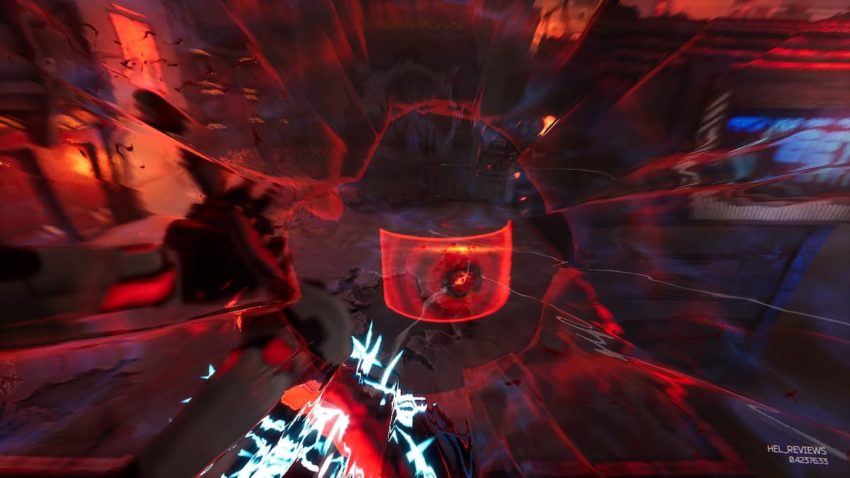
Simply put, it’s easier to murder in Project_Hel. She can jump far further than Jack and relies less on gaining speed for daring stunts. Hel can more easily slaughter more enemies. Overall, the DLC emphasizes that violence. Thereby, Hel is also less versatile. Rather than the ghostrunner’s four combat abilities, Hel can only “surge,” AKA shoot a giant projectile from her katana’s blade. In trade, she can do this far more often than Jack can activate any of his abilities. As Hel murders wantonly and grabs holographic items, she builds up a rage meter, which she can spend to activate surge again and again. When the rage meter is half-full, she’ll gain a shield that will block a single attack. This makes her twice as tough as Jack, who could only take one hit ever.
All this basically means that it is frightfully easy to chain powerful attacks. If rage is maxed out, the game encourages you to be reckless, an impossibility in the base game. It rocks to hack a handful of enemies to pieces with one or two attacks. While Project_Hel still requires a methodical quickness, its emphasis on slaughter offers something of a different edge.
Ghosts of Racists Past
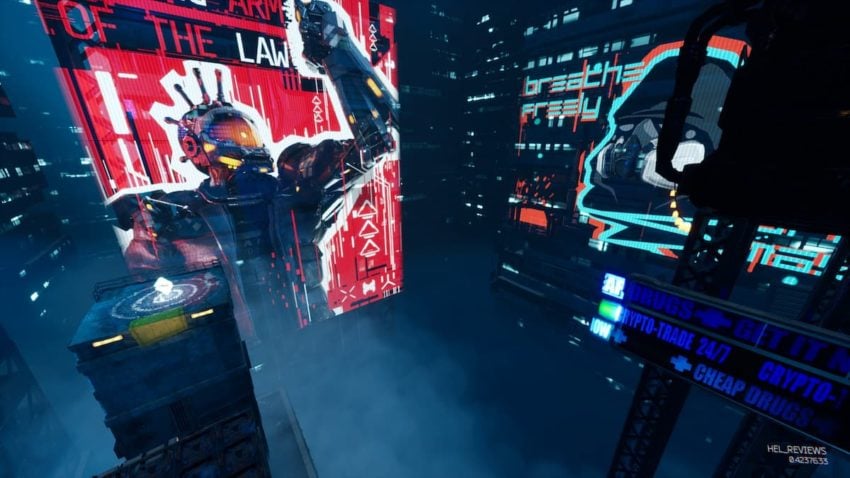
Unfortunately, its aesthetic continuation means that Project_Hel inherits Ghostrunner’s problems. To put it mildly, Ghostrunner is the sheen of sci-fi Orientalism and little else. Ghostrunner constantly associates its ill-defined, mythically Asian aesthetic with systems of oppression. It’s yellow panic, lifted wholesale from Cyberpunk classics like Blade Runner. Unfortunately, it lifts little else. There are no images as beguiling as J. F. Sebastian’s doll strewn apartment or the yellow steel sunlight of Tyrell headquarters. Instead it’s deeply superficial and dull. Neon skyscapes over black voids, it’s a cyberpunk obstacle course. In one comical location, a giant neon sign of a bowl of ramen hung in the middle of a wall, no door or restaurant in sight. Because, you know, that’s what cyberpunk is. This extends to the game’s scant world-building. Naming the last site of stratified capitalist preservation “Dharma Tower” is insensitive at best. Especially when the game clearly intends to critique the class war futures offered by figures like Elon Musk.
Project_Hel is a prequel and it tries to weight its otherwise slight narrative with dramatic irony. However, Ghostrunner’s basic beats are familiar to anyone who has been playing games since Bioshock. It’s hard for any of these callbacks to have power when what they reference is so fluffy and predictable. In the story’s scant thoughtful moments, it briefly considers what it might mean to have a body that is not yours. Again, though, this is pretty typical cyberpunk fare. The game doesn’t have the space or time to explore that horror. This is in part where Ghostrunner’s frantic pace fails it. The narrative amounts to an audio drama that plays as you murder and jump around. Both the base game and Project_Hel try for big emotional moments, but with Ghostrunner’s scant verbs and relentless speed, it cannot build out drama.
The verdict
In fact, the game’s speed is its greatest weakness, as well as its greatest asset. Without the ebb and flow of truly great level design, Ghostrunner’s hallways and arenas can blur together into a neon mess. This is especially true in Project_Hel, which largely takes place in the same district in the tower. With that in mind, it’s best to play with the base game firmly in the realm of memory.
Ultimately, if you were thrilled by Ghostrunner’s speed, Project_Hel provides more, with just enough difference to have some novelty. If, like me, you found its aesthetic more tiresome than its joys were worth, this won’t change your mind. Still, for a particular kind of speedrunning brain, Project_Hel has some magic.
Final Score:
6 / 10
| + | Distinctly violent, first-person platforming thrills |
| + | Enough novelty to feel distinct from the base game |
| – | Embarrassingly racist cyberpunk aesthetic |
| – | A cliché ridden story without weight or drama |
Gamepur team received a PC code for the purpose of this review.

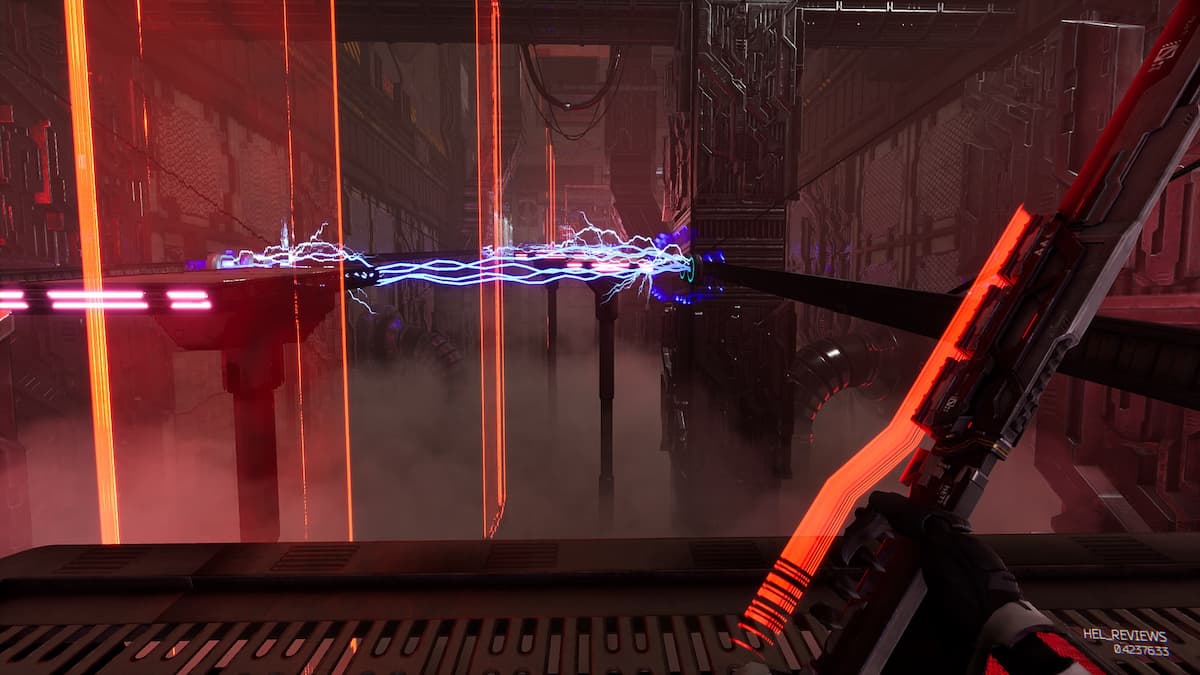
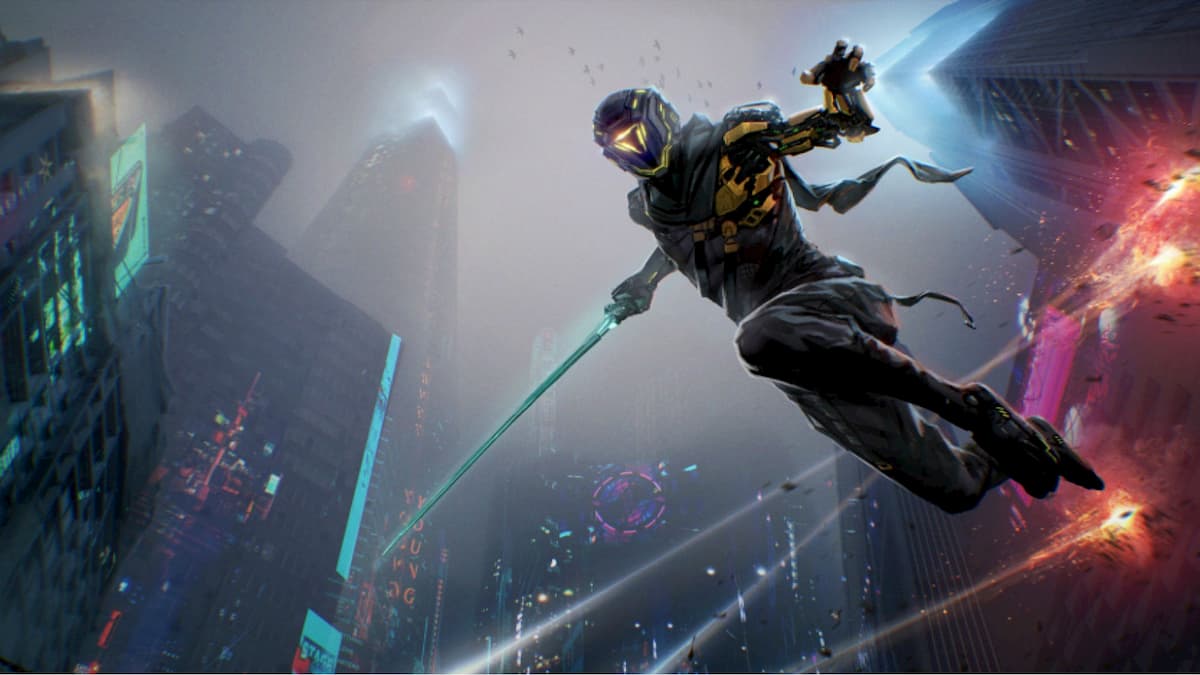
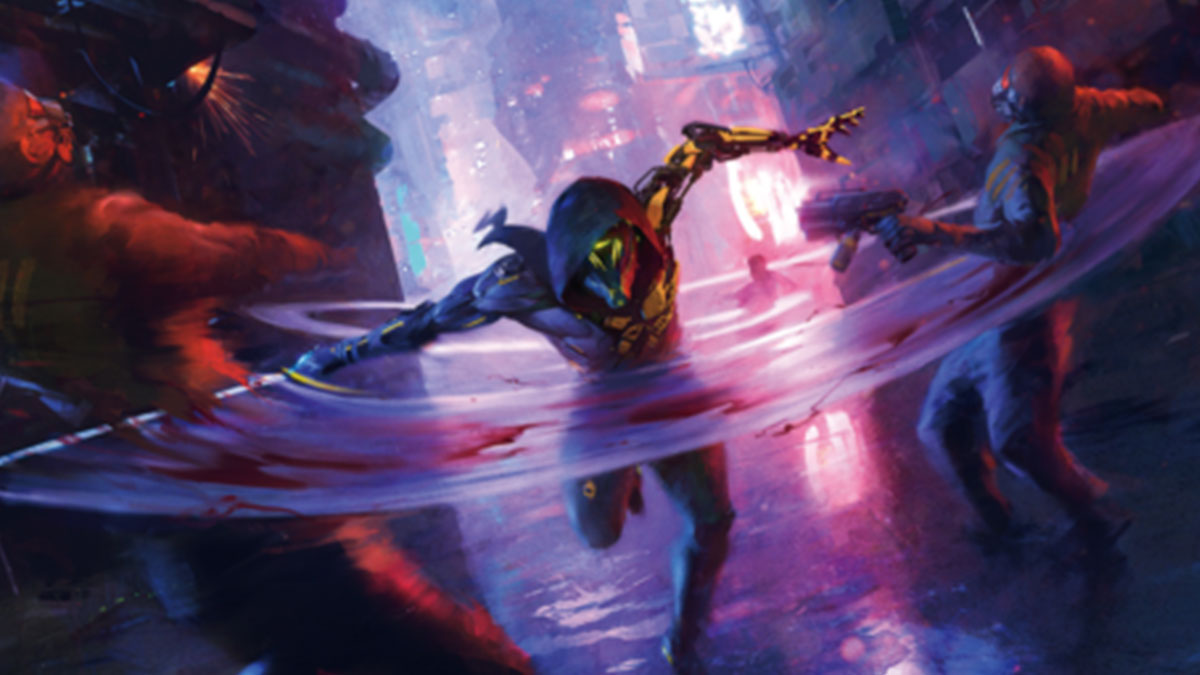
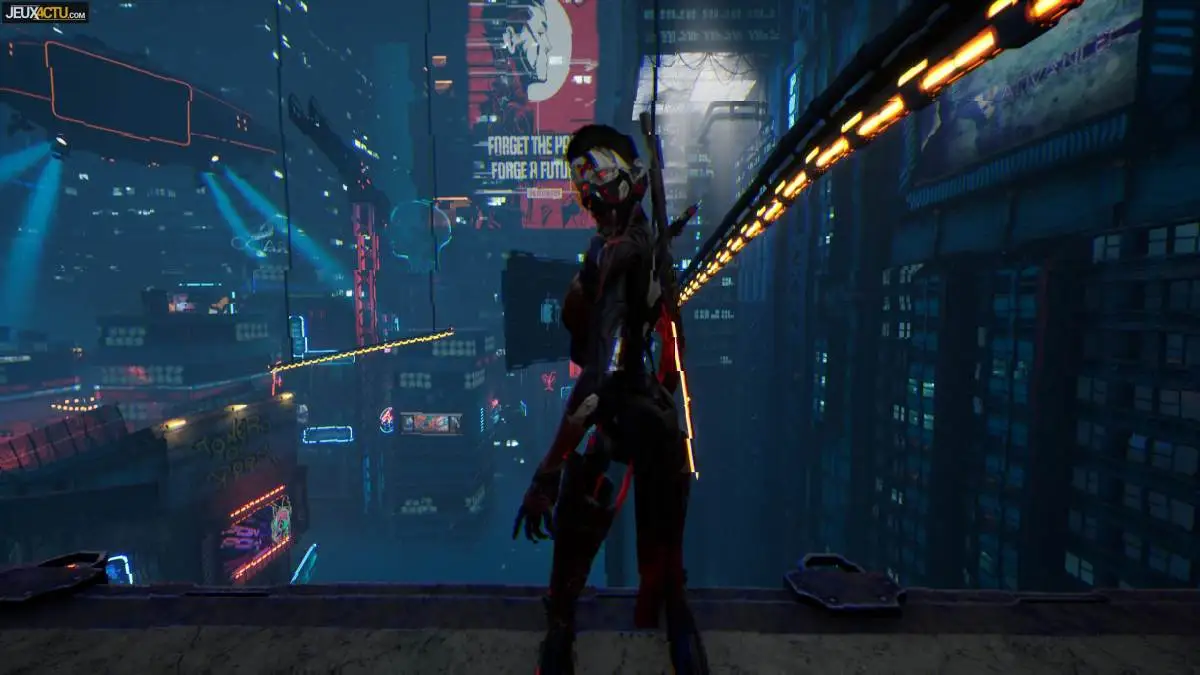
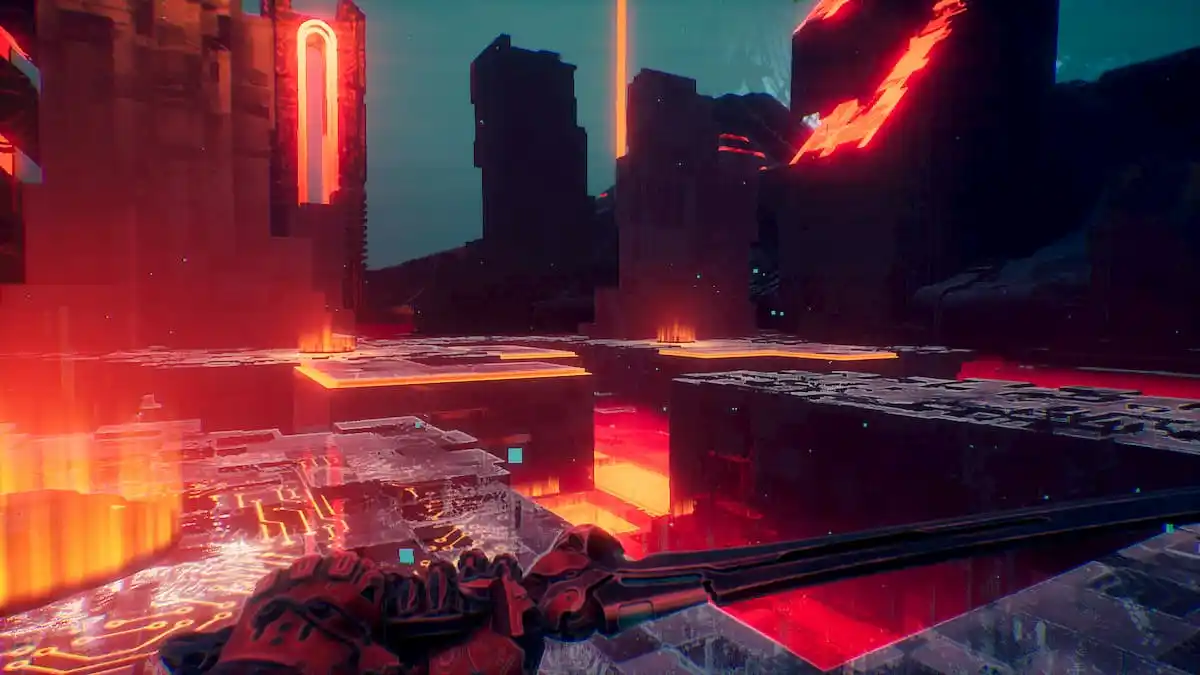
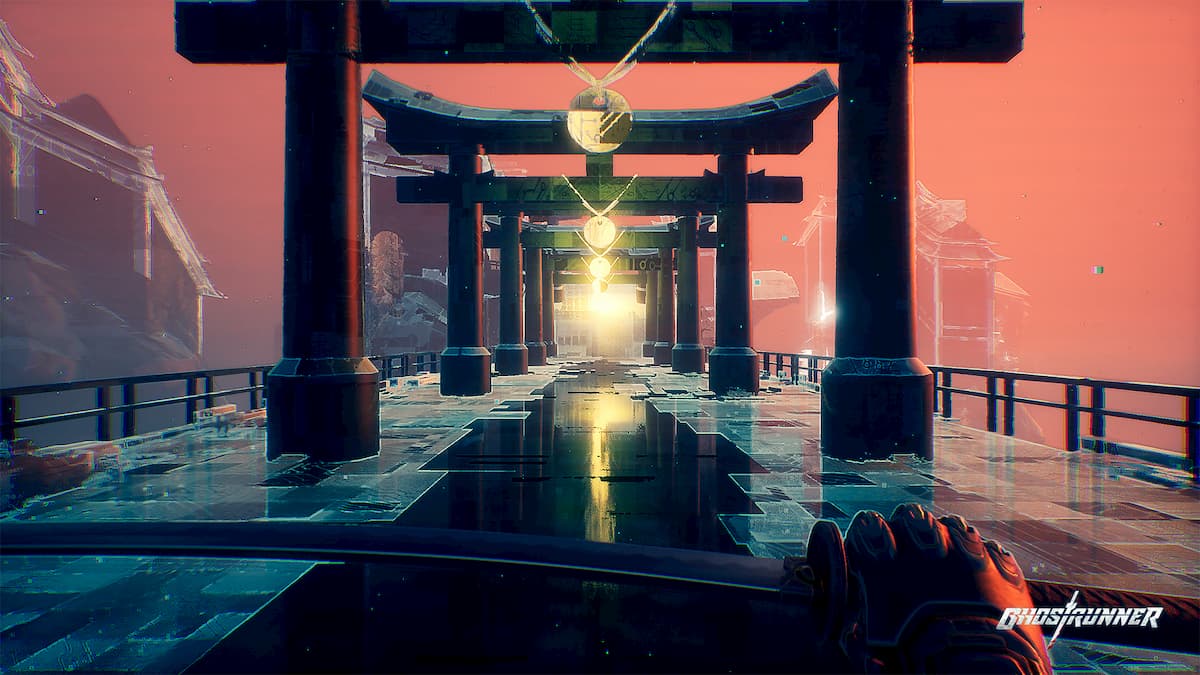
Published: Mar 2, 2022 4:19 PM UTC